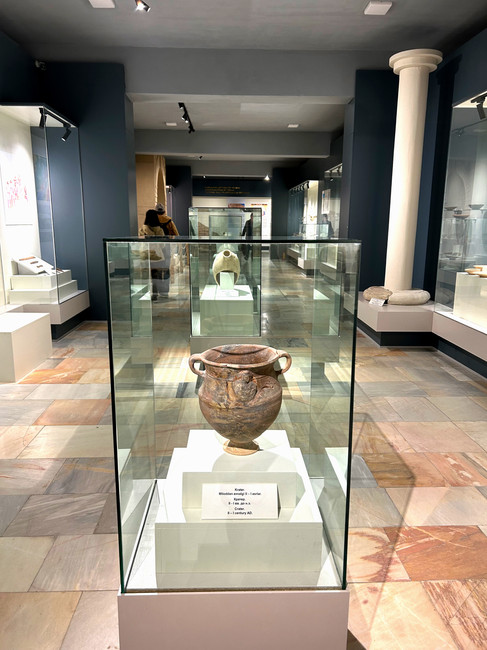Best Things To Do In Samarkand
Updated: Sep 16, 2024
Samarkand is one of a few cities in Central Asia that are widely known in the world due to its historical significance and incredibly beautiful marvels of ancient architecture.

Samarkand is also one of the oldest continuously inhabited cities in Asia, tracing its origins back to the 7th century BCE. Throughout history, it has been a major hub along the Silk Road, witnessing the rise and fall of empires, including the Persian, Greek, Arab, Mongol, and Timurid dynasties, each leaving their architectural and cultural legacy on the city.

To enjoy Samarkand and explore its incredibly rich history and culture, I recommend spending at least 3 days there.
What are the best things to do in Samarkand? Let's get started.
Registan Square
Registan Square is the heart of Samarkand and one of the most iconic landmarks in Central Asia. Registan, which means "sandy place" or "desert" in Persian, was originally a central square used for public gatherings, royal proclamations, and celebrations. It is surrounded by three grand madrasahs (Islamic schools), which are prime examples of Islamic architecture and Persian craftsmanship.

The oldest one, built at the beginning of the 15th century (1417-1420), is Ulugh Beg Madrasah, built by the Timurid ruler and astronomer Ulugh Beg. Look at the star motifs and astronomical decorations: they reflect Ulugh Beg's passion for science and astronomy.

The second one is Sher-Dor Madrasah, constructed between 1619 and 1636 by the order of Yalangtush Bakhodur, the madrasah's name means "having tigers" due to the tiger mosaics on its facade - very unusual in Islamic art due to the prohibition of depicting living beings.

The third one, Tilya-Kori Madrasah (1646-1660) was built to complete the architectural ensemble of the Registan. It features a lavishly decorated mosque with stunning golden interior decorations.

You need to pay an entrance fee (around 50.000 UZS or 4 EUR) to visit the madrasahs, and it's worth it. Check out the opening hours (Google Maps works pretty well) and prepare to spend at least a couple of hours there.
Shah-i-Zinda
Shah-i-Zinda, meaning "The Living King," is a necropolis, renowned for its stunning Islamic architecture and intricate tile work. It is one of the most significant and well-preserved architectural ensembles in Central Asia, reflecting the region's rich cultural and religious heritage.

The site dates back to the 9th century and has been expanded and refurbished over the centuries, particularly during the Timurid period (14th-15th centuries). It is believed to be named after Qutham ibn Abbas, a cousin of the Prophet Muhammad, who is said to be buried there. His presence gives the site its name and religious significance, as he is revered as a martyr who spread Islam in the region.

Shah-i-Zinda consists of a series of mausoleums, mosques, and other structures, forming a narrow, elongated complex along a hillside. The architecture showcases the evolution of Islamic art and construction techniques over several centuries.

Gur-e-Amir Mausoleum
The Gur-e-Amir Mausoleum is a significant historical and architectural landmark in Samarkand. It serves as the final resting place of the great conqueror Timur (Tamerlane), his sons, and grandsons, including the notable astronomer and ruler Ulugh Beg. The mausoleum is an exquisite example of Timurid architecture and has greatly influenced the development of Islamic funerary architecture across Central Asia and beyond.

The construction of the Gur-e-Amir, which translates to "Tomb of the King," began in 1403 after the death of Timur's beloved grandson, Muhammad Sultan. Originally intended to be a madrasa (Islamic school) and khanqah (a building designed specifically for gatherings of a Sufi brotherhood), it was repurposed as a mausoleum following Muhammad Sultan's untimely death.

Timur himself was buried there in 1405, following his death on the way to conquer China. Subsequent generations of the Timurid dynasty were also interred in this mausoleum.
Ulugh Beg Observatory
The Ulugh Beg Observatory is another remarkable attraction in Samarkand. It is one of the most significant astronomical observatories from the medieval Islamic world. It was established by the Timurid ruler and renowned astronomer Ulugh Beg, the grandson of Timur (Tamerlane) and a prominent ruler of the Timurid Empire, at the beginning of the 15th century.

Do not miss the chance to visit the museum near the observatory, where you can learn a lot about the developments of astronomy in the Middle Ages, the personality of Ulugh Beg and his contributions to science.

Afrosiab Museum
The Afrosiab Museum is dedicated to the history and archaeology of the ancient city of Afrosiab (ancient Samarkand). The city of Afrosiab was founded around the 7th century BCE and remained an important cultural and economic hub until it was destroyed by Genghis Khan in the early 13th century.
This museum provides a comprehensive overview of the region's rich historical and cultural heritage. One of the most famous exhibits in the museum is the collection of well-preserved Sogdian frescoes from the 7th century. These murals depict various scenes, including royal audiences, hunting scenes, and religious ceremonies.
I hope you found this post useful and that it has inspired you to visit Samarkand: a city where history comes alive through its stunning architecture and vibrant culture, making it a fascinating destination for any traveller.
If you want to stay informed about my upcoming adventures, you can subscribe to my email list (use the button on the page) and follow me on Instagram.








Comments